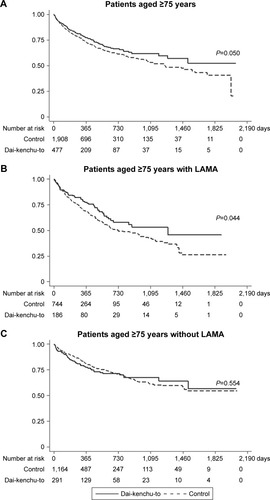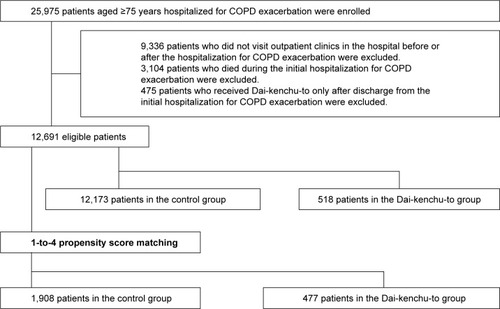Figures & data
Table 1 Baseline characteristics of patients with COPD aged ≥75 years with and without Dai-kenchu-to, before and after 1-to-4 propensity score matching
Table 2 Comorbidities during hospitalization and treatments for COPD in patients aged ≥75 years with and without Dai-kenchu-to
Figure 2 Kaplan–Meier survival curves of patients with COPD with or without Dai-kenchu-to after hospitalization for COPD exacerbation in the 1-to-4 propensity score-matched population. (A) Results for patients aged ≥75 years. (B) Results for patients with LAMA therapy. (C) Results for patients without LAMA therapy before hospitalization. The Kaplan–Meier curves were compared with a log-rank test. A P-value of <0.05 indicated statistical significance.

Table 3 HRs of re-hospitalization for COPD exacerbation or death after 1-to-4 propensity score matching in the Dai-kenchu-to group vs control group
Table S1 List of drugs used to treat COPD and drugs used to define COPD exacerbation in outpatient settings
Table S2 ICD-10 codes used to identify comorbidities

